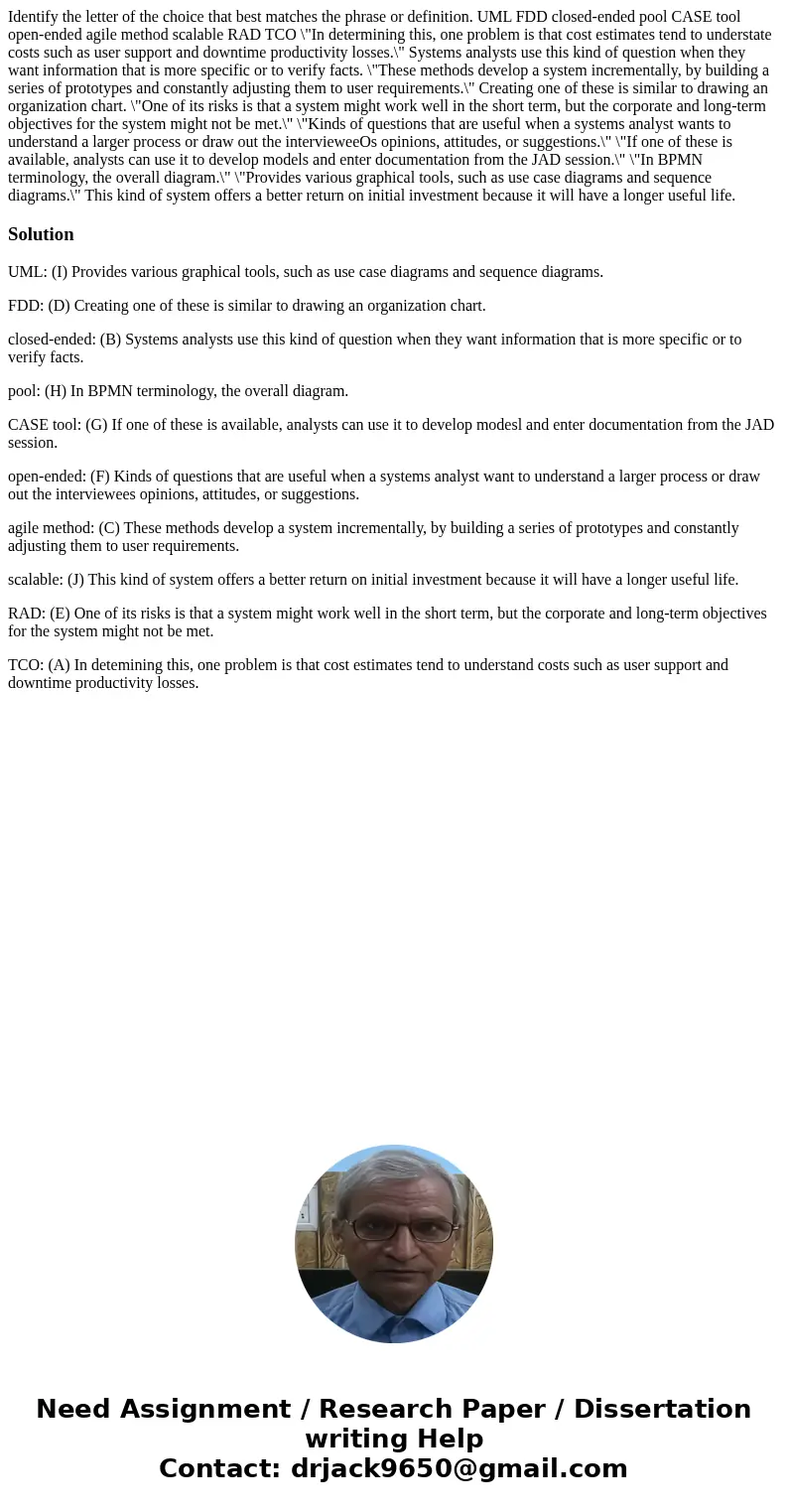Identify the letter of the choice that best matches the phra
Solution
UML: (I) Provides various graphical tools, such as use case diagrams and sequence diagrams.
FDD: (D) Creating one of these is similar to drawing an organization chart.
closed-ended: (B) Systems analysts use this kind of question when they want information that is more specific or to verify facts.
pool: (H) In BPMN terminology, the overall diagram.
CASE tool: (G) If one of these is available, analysts can use it to develop modesl and enter documentation from the JAD session.
open-ended: (F) Kinds of questions that are useful when a systems analyst want to understand a larger process or draw out the interviewees opinions, attitudes, or suggestions.
agile method: (C) These methods develop a system incrementally, by building a series of prototypes and constantly adjusting them to user requirements.
scalable: (J) This kind of system offers a better return on initial investment because it will have a longer useful life.
RAD: (E) One of its risks is that a system might work well in the short term, but the corporate and long-term objectives for the system might not be met.
TCO: (A) In detemining this, one problem is that cost estimates tend to understand costs such as user support and downtime productivity losses.

 Homework Sourse
Homework Sourse